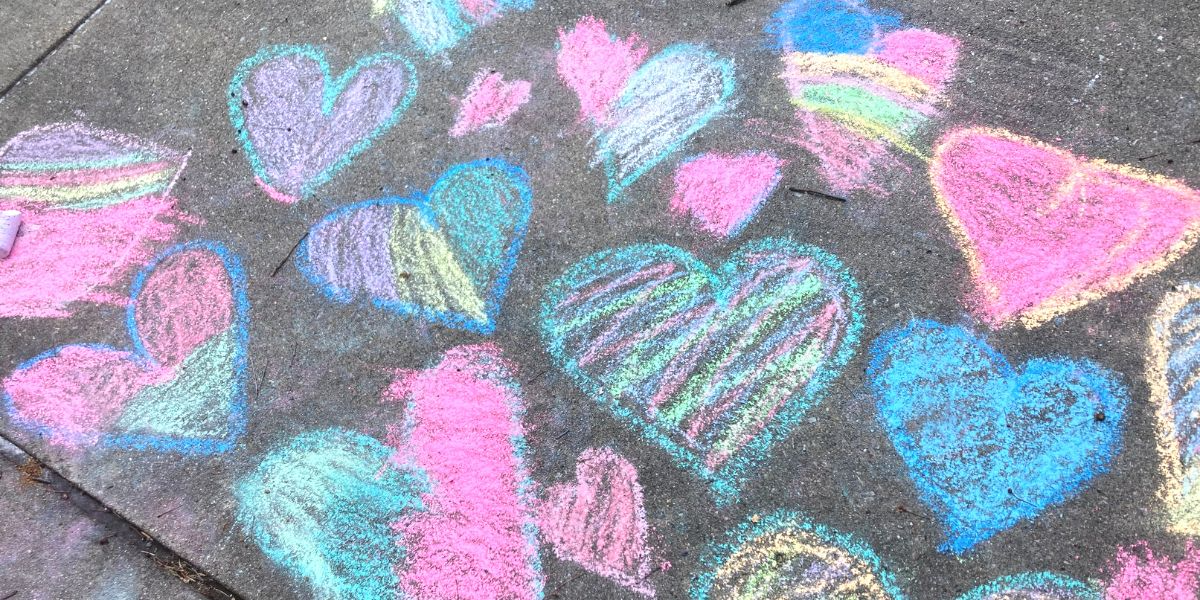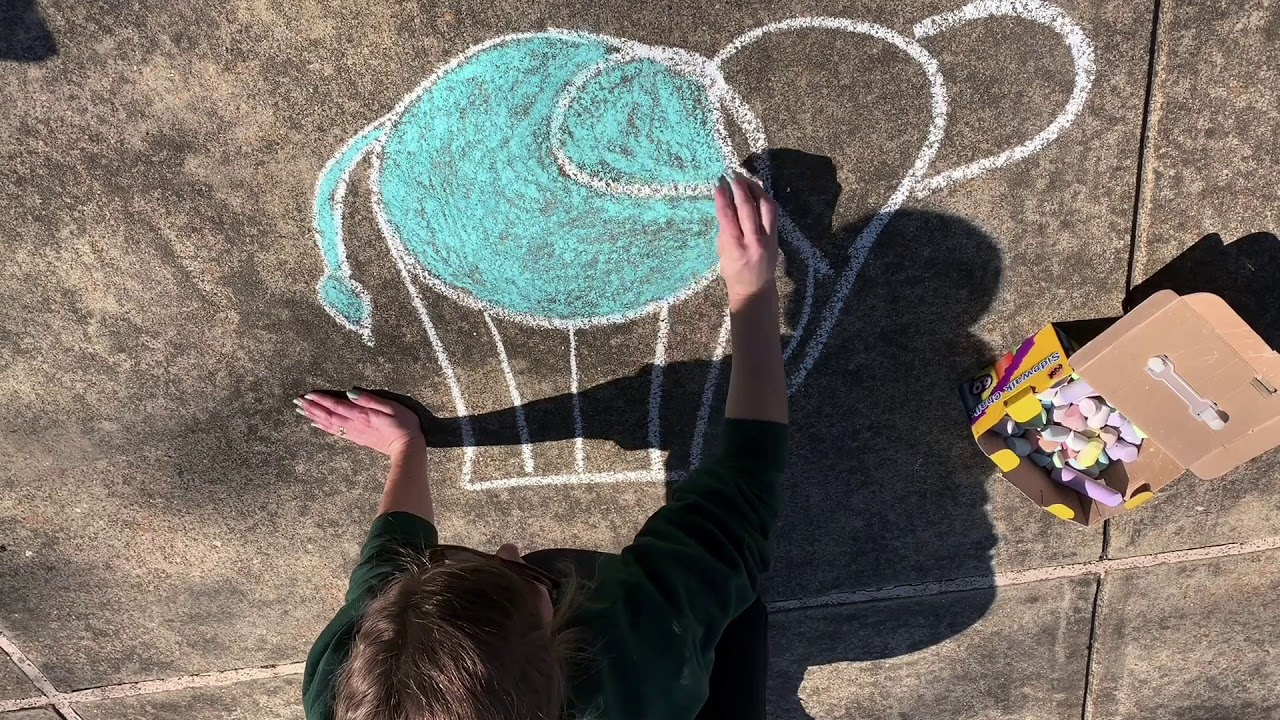Introduction to Sidewalk Chalk: An Enduring Medium for Outdoor Play
Sidewalk chalk, a humble yet versatile tool that has long captured the imagination of children and adults alike, is an enduring testament to the universal appeal of artistic expression in public spaces. This vibrant medium, composed of easily washable, non-toxic pigments pressed into chunky sticks, invites users to transform the often monotonous concrete canvas of sidewalks, driveways, and plazas into colorful, temporary masterpieces. With its accessibility, affordability, and boundless potential for creativity, sidewalk chalk has become a cherished staple of outdoor play, fostering imagination, social interaction, and community engagement.
Historical Roots and Evolution of Sidewalk Chalk
The origins of sidewalk chalk can be traced back to ancient times when various cultures utilized natural earth pigments for drawing on pavements and walls. However, the modern form of sidewalk chalk emerged during the late 19th and early 20th centuries, coinciding with the widespread adoption of concrete as a primary building material for urban infrastructure. Early versions were often homemade, with parents and teachers mixing powdered pigment with water and a binding agent like plaster of Paris to create rudimentary sticks for children’s play.
As the popularity of sidewalk chalk grew, commercial manufacturers began producing standardized, mass-produced chalks in an array of colors, sizes, and shapes. Today, these vibrant sticks come in various forms, such as traditional round cylinders, jumbo blocks, and even novelty shapes like animals or vehicles, catering to diverse preferences and age groups. Moreover, advancements in pigment technology have led to the development of brighter, more fade-resistant chalks that withstand weather conditions better, extending the lifespan of outdoor creations.
The Artistic Appeal of Sidewalk Chalk: Unleashing Creativity
One of the most captivating aspects of sidewalk chalk lies in its ability to unleash creativity across all ages and skill levels. Its large, easy-to-grip format encourages bold, sweeping gestures and free-flowing lines, allowing artists to quickly sketch out ideas and experiment with different techniques. From simple doodles and playful hopscotch grids to intricate mandalas, life-sized portraits, and elaborate 3D illusions, sidewalk chalk art offers a platform for individuals to express their unique artistic visions in a highly visible, public setting.
Moreover, sidewalk chalk’s impermanence fosters a sense of liberation, as artists can fearlessly explore new concepts without the pressure of creating a permanent piece. Mistakes can be easily erased or incorporated into the design, promoting resilience and adaptability in the creative process. This transient nature also encourages frequent revisits and revisions, turning sidewalks into ever-evolving galleries that mirror the dynamic spirit of the communities they serve.
Sidewalk Chalk as a Tool for Learning and Development
Beyond its artistic merits, sidewalk chalk plays a crucial role in the cognitive, emotional, and social development of children. Engaging in chalk-based activities promotes fine motor skills, hand-eye coordination, and spatial awareness as young ones grasp, manipulate, and draw with the chunky sticks. Furthermore, the act of drawing and writing on a large scale fosters gross motor skills, helping children develop strength, balance, and coordination.
In educational settings, sidewalk chalk serves as a versatile teaching aid, facilitating interactive lessons in subjects like math, science, language arts, and social studies. Teachers can create engaging, hands-on learning experiences by drawing diagrams, charts, and puzzles directly on the pavement, encouraging students to actively participate and retain information through kinesthetic learning.
Additionally, sidewalk chalk activities promote socialization and collaboration, as children work together to create group murals, play games, or solve cooperative challenges. These shared experiences foster communication, empathy, and problem-solving skills, while also nurturing a sense of camaraderie and community among participants.
Sidewalk Chalk Festivals and Events: Celebrating Public Art and Community Engagement
In recent years, sidewalk chalk art has transcended its status as a casual pastime, evolving into a recognized art form showcased at festivals and events worldwide. These vibrant celebrations bring together professional and amateur artists, transforming city streets into open-air galleries teeming with breathtaking, oversized masterpieces.
Sidewalk chalk festivals not only provide a platform for artists to showcase their talents and gain exposure but also serve as catalysts for community engagement and tourism. Spectators can witness the creative process firsthand, interact with artists, and even participate in workshops or family-friendly activities, fostering a deep appreciation for public art and the transformative power of creativity.
Furthermore, many of these events serve philanthropic purposes, raising funds and awareness for local charities, schools, or cultural initiatives. By bridging the gap between art, community, and social impact, sidewalk chalk festivals exemplify the unifying and empowering potential of this accessible medium.
Environmental Considerations and Innovations in Sustainable Sidewalk Chalk
While sidewalk chalk is generally considered eco-friendly due to its washable, non-toxic properties, some environmental concerns have been raised regarding the production, use, and disposal of traditional chalks. For instance, the mining of raw materials, energy-intensive manufacturing processes, and potential dust pollution during use may contribute to the product’s overall environmental footprint.
In response to these concerns, innovative companies have developed sustainable alternatives, such as chalk made from recycled paper pulp, natural clay, or plant-based binders. These eco-friendly options often boast reduced carbon emissions, biodegradability, and minimal dust generation, offering environmentally conscious consumers a greener choice without compromising on quality or color vibrancy.
Moreover, conscientious use and disposal practices can further minimize the environmental impact of sidewalk chalk. Encouraging users to sweep up excess chalk powder, dispose of broken pieces properly, and opt for water-soluble varieties can help maintain clean public spaces and reduce waste. Organizers of chalk festivals can also implement green initiatives, such as using eco-friendly cleaning methods, promoting reusable materials, and partnering with recycling facilities to manage post-event waste.
Conclusion: Sidewalk Chalk
A Timeless Medium Bridging Art, Play, and Community
Sidewalk chalk, with its enduring charm and universal appeal, continues to captivate generations as a versatile, accessible, and environmentally friendly medium for artistic expression, learning, and community engagement. Whether used for spontaneous solo creations, collaborative neighborhood projects, or grand-scale public art festivals, sidewalk chalk remains a powerful symbol of human creativity, connection, and the joy of transforming ordinary spaces into extraordinary canvases. As innovations in sustainable production and responsible use practices emerge, this beloved art form is poised to evolve alongside our growing commitment to environmental stewardship, ensuring that future generations can continue to revel in the timeless magic of sidewalk chalk.





